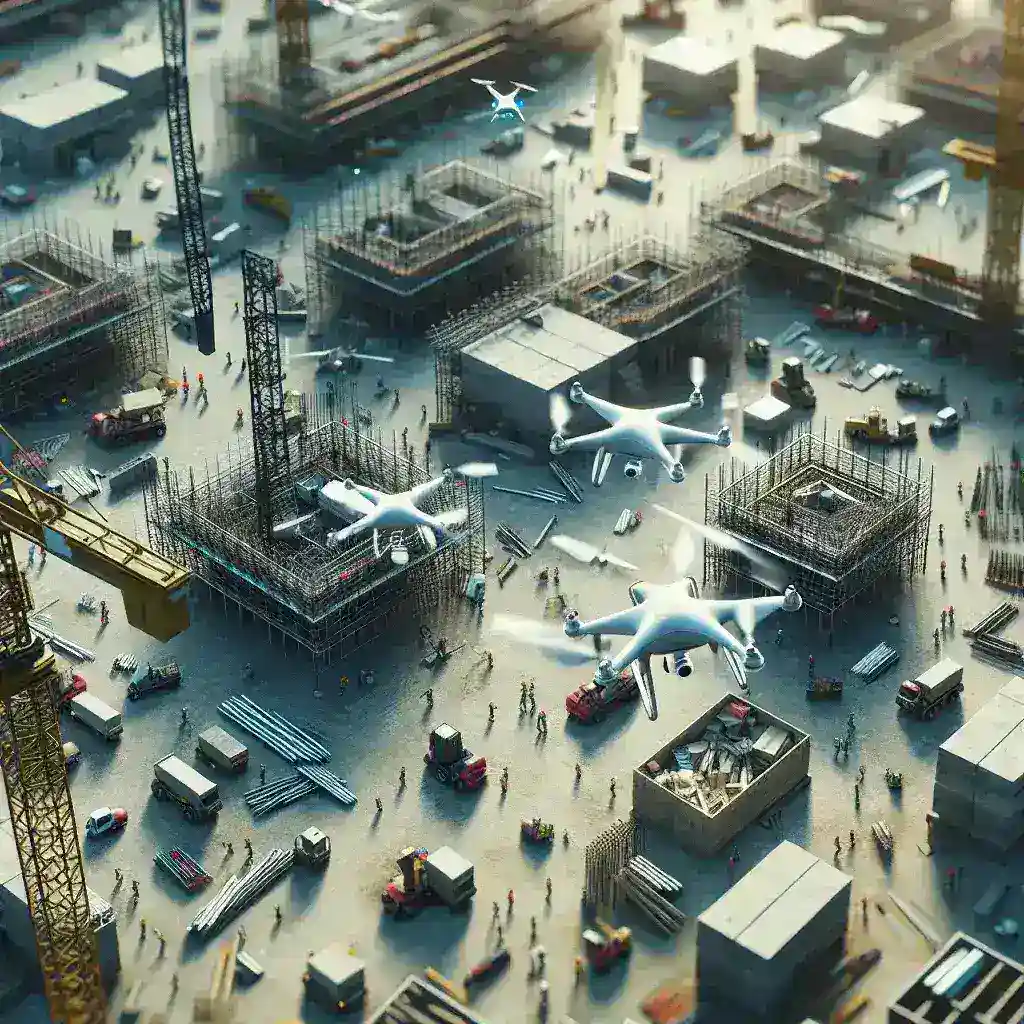Introduction
In recent years, the construction industry has witnessed a remarkable evolution, primarily driven by technological advancements. Among these innovations, DJI, a leader in drone technology, has introduced groundbreaking features aimed at improving safety and efficiency on construction sites. The latest enhancement, AI collision avoidance, marks a significant milestone in drone capabilities and promises to reshape the way construction professionals utilize aerial surveys and site management.
The Importance of Collision Avoidance
Construction sites are bustling environments characterized by dynamic activities, moving machinery, and fluctuating structures. This complexity necessitates advanced tools that can navigate safely without human intervention. Collision avoidance systems are essential to ensure that drones can operate autonomously, minimizing risks associated with accidents and enabling seamless integration into daily operations.
How DJI’s AI Collision Avoidance Works
The AI collision avoidance system developed by DJI leverages sophisticated algorithms and advanced sensors to detect and avoid obstacles in real-time. Here’s a breakdown of how this technology functions:
- Sensors and Cameras: Equipped with multiple sensors and high-resolution cameras, the drone can scan its environment extensively.
- Real-Time Data Processing: The integrated AI processes data instantly, evaluating potential collision threats while determining safe flight paths.
- Autonomous Navigation: If an obstacle is detected, the drone automatically adjusts its course, either by rerouting or hovering in place until it is safe to proceed.
Benefits of AI Collision Avoidance for Construction Drones
Integrating AI collision avoidance into construction drones offers several advantages:
1. Enhanced Safety
The foremost benefit is improved safety. By minimizing the risk of accidents associated with drone operation, construction companies can ensure safer working environments for their teams.
2. Increased Efficiency
With autonomous navigation capabilities, drones can cover expansive areas quickly without the constant supervision of a pilot. This efficiency translates into significant time savings for surveying and inspecting construction sites.
3. Reduced Operational Costs
By mitigating the risk of crashes and damage to drones, companies can lower maintenance and replacement costs, generating long-term savings.
4. Data-Driven Insights
With the ability to operate safely, drones can gather and transmit data more frequently, leading to better decision-making based on up-to-date information.
Historical Context
The journey of drone technology in construction began with simple aerial photography and progressed to sophisticated data collection. Initially, the primary challenge was managing flight paths and avoiding collisions. Over the years, DJI has continuously refined drone technology, integrating features like GPS stabilization and automated flight planning. With the introduction of AI collision avoidance, DJI sets a new standard for capability and reliability in construction drones.
Future Predictions
As AI technologies continue to advance, the future for construction drones looks promising:
- Integration with Building Information Modeling (BIM): Future drones may seamlessly integrate with BIM systems, allowing for real-time updates of project statuses.
- Enhanced Collaboration: Drones equipped with AI can provide live feeds to team members on-site and remote stakeholders ensuring everyone stays informed.
- Autonomous Fleet Management: Future developments may lead to autonomous fleets of drones working together, optimizing project efficiency even further.
Pros and Cons of AI Collision Avoidance
While the benefits of AI collision avoidance are clear, it is crucial to consider its drawbacks:
Pros
- Increased safety for personnel and equipment
- Improved efficiency and accuracy in data collection
- Lower operational costs over time
Cons
- Initial investment costs may be high
- Dependence on technology may lead to skills degradation among pilots
- Potential for unforeseen technical issues
Step-by-Step Guide to Implementing DJI’s AI Collision Avoidance
For construction companies looking to integrate this technology, here’s a step-by-step guide:
Step 1: Assess Your Needs
Evaluate your construction projects and determine how drones can enhance your operations.
Step 2: Invest in DJI Drones
Identify the DJI drone model that includes AI collision avoidance technology that aligns with your requirements.
Step 3: Training
Provide comprehensive training for your team to ensure they are well-acquainted with the drone’s capabilities and features.
Step 4: Regular Maintenance
Implement a maintenance schedule to ensure optimal performance and longevity of the drones.
Step 5: Monitor and Adapt
Continuously monitor the drone’s impact on your operations and adjust your strategies accordingly.
Real-World Examples
Several construction companies have successfully integrated DJI’s AI collision avoidance technology:
Case Study 1: Urban Development Project
A major urban development project in New York utilized DJI drones to survey the site. With AI collision avoidance, the drones efficiently navigated around cranes and scaffolding, providing the team with timely data that accelerated the construction timeline.
Case Study 2: Infrastructure Inspection
In a rural infrastructure inspection, a construction firm employed drones equipped with AI technology to assess bridge conditions. The drones successfully avoided trees and power lines, allowing for thorough inspections without human risks.
Cultural Relevance
The adoption of AI collision avoidance technology reflects a broader trend in construction toward embracing innovation. As industries around the world face increasing complexity and the demand for efficiency rises, the adoption of advanced technologies like drones becomes vital. Construction professionals are now expected to be proficient in utilizing these tools, aligning their skills with a tech-savvy future.
Conclusion
DJI’s introduction of AI collision avoidance for construction drones represents a pivotal advancement in the industry. This technology not only enhances safety but also boosts efficiency and reduces operational costs. As the construction landscape evolves, embracing such innovations will be essential for companies aiming to remain competitive and effective. With a commitment to continuous improvement and technological integration, DJI is paving the way for a smarter future in construction.

Leave a Reply